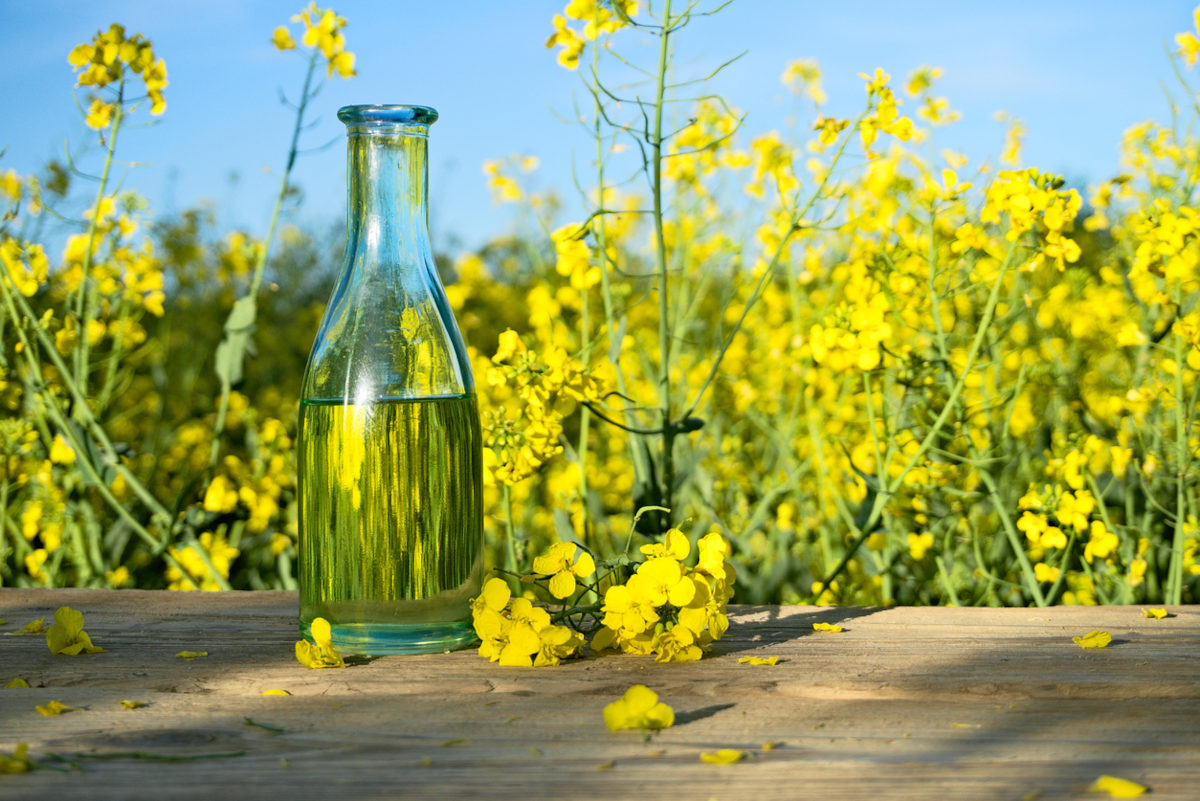Opinion Focus
- Brazil works to create tropical rapeseed.
- This is the third most produced oilseed in the world.
- The country hopes to ramp up production and export within 5 years.
There is no shortage of reasons for Brazil to invest in rapeseed. It’s the third most produced oilseed in the world, behind only soybean and palm oil. It’s also in high demand: rapeseed oil has a low saturated fat content and the presence of omega 3 and vitamin E. In addition, the stability of the oil and high levels of fatty acids facilitate the manufacture of biodiesel, a market that continues to rise.
Biofuel production increased by about 6% last year globally, according to the International Energy Agency. By 2027, the demand for biodiesel should grow more than 20%.

In food, rapeseed oil is present in a series of products, ranging from sauces and pasta to animal feed. The thousand and one uses of rapeseed have favored prices on the international market, which have been accompanying those of soybean – here is another attraction for growing the grain.
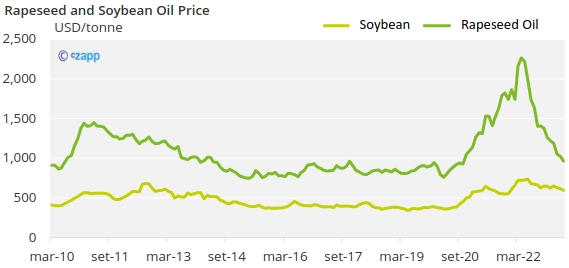
Source: Bloomberg/World Bank
So far, Brazil has had little participation in world rapeseed production, although cultivation has been increasing. Last year, the country produced 96,200 tonnes of grain, 75% more than in 2021, according to the National Supply Company (Conab) – 90% of the crop is concentrated in the South.
This is still very little compared to countries like India, which harvested 11 million tonnes of rapeseed in 2022, and the European Union, champion, with 19.5 million tonnes, according to the USDA. “Brazil still needs to import rapeseed oil, which is a plant that originates in the northern hemisphere, in temperate climates, but we intend to change this reality”, says Bruno Laviola, deputy head of research and development at Embrapa Agroenergia, Brazilian agriculture research corporation.
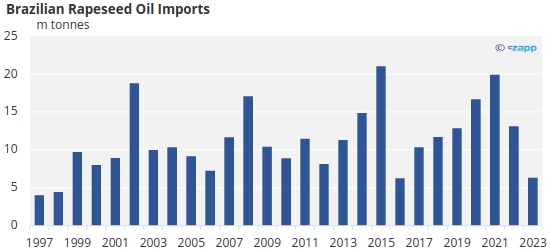
Source: Comex
The goal is to develop tropical rapeseed cultivars, adapted to the conditions of the Cerrado, where almost 180 million tonnes of grains are produced per year, in the same way as was done with wheat. The research, which began twenty years ago, gained extra steam from 2015, with the advancement of field tests. Genetic improvement, obtained by crossing seeds from countries such as Australia, the United States and Canada, has been producing rapeseed that is more resistant to drought and aluminum, a toxic element present in the soil of the Cerrado. Tests continue with a view to selecting the best seeds, which should hit the market in two or three years.
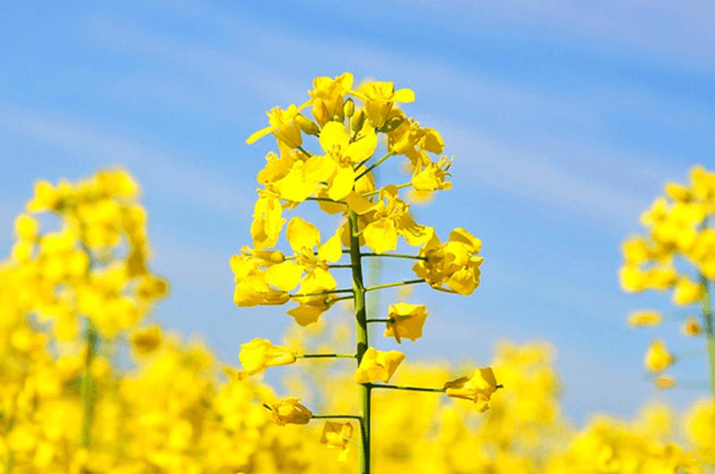
Rapeseed flower: Embrapa invests in the tropicalization of the plant. Publicity photo.
In five years, the country should grow 1.4 million tonnes of rapeseed, making it possible to meet domestic demand and start exporting. The idea is to produce rapeseed in the so-called off-season, between soybean planting, without expanding the area used for agriculture.
Some rural producers have already been investing in rapeseed in the Cerrado, using cultivation techniques adapted to local conditions, with the use of straw, to protect the soil, and wider planting spacing. Rural producer Gabriel Pandolfo da Motta, from the Federal District, started planting rapeseed in 2021. This year, the expectation is to harvest 70 tonnes. “Both production and productivity should grow a lot and there is still the attractive price, which is very interesting”, he says.
Read, below, the interview with Bruno Laviola, from Embrapa, and learn more about tropical rapeseed:
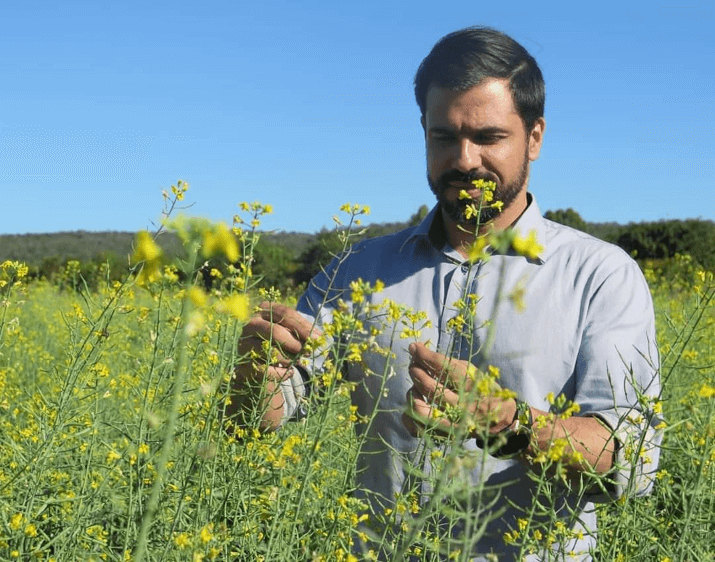
Bruno Laviola, from Embrapa. Embrapa publicity photo.
How is the research on tropical rapeseed going and what is the main goal?
Brazil can become the world’s largest rapeseed producer without needing to expand a single hectare. That’s because we are developing tropical rapeseed for second-crop agriculture. We are only going to take advantage of the areas that are already cultivated today in Brazil.
Rapeseed should be grown during what period of the year in the Cerrado?
In November, soybean sowing begins and at the end of February or early March, the harvest period begins. After that, it´s possible to plant the rapeseed. It would be harvested in July. Today, Brazil cultivates about 42 million hectares of soybeans. Rapeseed can be an option for at least 10% to 20% of the area cultivated with soybeans. There are almost 8.5 million hectares that can be exploited with rapeseed, making Brazil one of the largest rapeseed producers in the world. In Brazil, unlike what happens in countries with a temperate climate, we get two to three harvests a year.

Source: Conab
Rapeseed improves soil condition and helps control the incidence of certain pests, doesn’t it?
Yes. Decreases the spread of some pests. Rapeseed has a deeper root system than corn, so it retrieves nutrients from deeper layers. It is a crop that has a decomposition that facilitates the release of nutrients, which contributes to the soybean crop. It can also be used together with the production of honey, as there is a large population of bees when the plant is flowering. And bees increase rapeseed productivity by up to 30%. So, it is a very interesting option for different systems.
How does rapeseed help control the incidence of pests?
First, let’s remember that today nematodes are the big problem with soy in Brazil. The country loses around BRL 65 billion per year due to the incidence of nematodes in soybeans. Rapeseed is not a nematode host and can help control the pest. We did a series of studies with rapeseed leaf extract and saw that it helped to control the nematode. There are chemical compounds in rapeseed that slow down nematode development in the soil.
Regarding the cultivation of rapeseed, there is the issue of international prices that are on the rise, isn’t there? Could this be an attraction for Brazilian farmers to invest in tropical rapeseed?
The rapeseed bag price follows the soybean price. So, it’s a very profitable option. With the size of the grain growing area in Brazil, we can pass large rapeseed producers. Canada, the world’s largest producer together with the European Union, currently plants around 9 million hectares of rapeseed. If Brazil uses 20% of the soybean area to plant rapeseed, it would already be close to the area planted today in Canada.
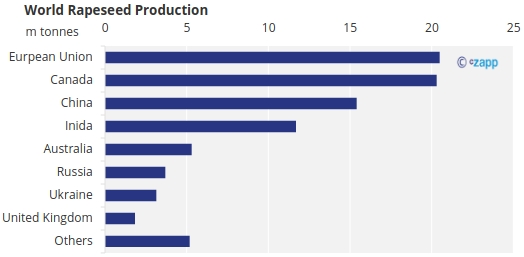
Source: USDA
And why do rapeseed prices follow soybean prices?
As far as oil for human consumption is concerned, rapeseed oil is now a standard, particularly in Europe and countries such as Australia. For human health, rapeseed oil is better than soybean oil. In terms of production in the world, what is produced most is palm oil and, in second place, soy oil. In third place comes rapeseed. It is a commodity widely used worldwide. This helps explain rapeseed ‘s favorable price.
Rapeseed oil can also be turned into biodiesel, right?
The rapeseed produced in Brazil has a privileged position because here we don’t need new areas for agriculture, we can plant in areas that are already cultivated. It does not generate pressure for forests or environmental impacts. Regarding the manufacture of biodiesel, the chemical composition of rapeseed and more specifically its fatty acids are very interesting for conversion to biodiesel.
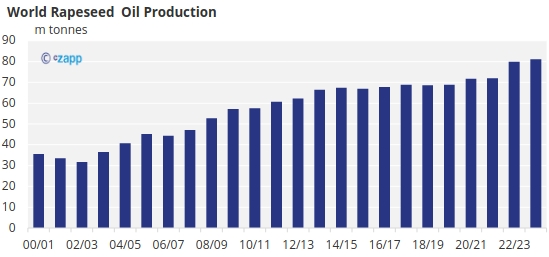
Is tropical rapeseed irrigated?
It can be produced with or without irrigation. With irrigation, productivity is higher, as with other crops. But the research work we are developing is for rapeseed to be produced without irrigation.
When did the research start?
Research into the tropicalization of rapeseed began some 20 years ago. In 2015, we began work to genetically adapt the rapeseed to the Cerrado. At the same time, we started to adapt the growing conditions to the tropical climate. The nutrient demand, pest resistance and planting period are different. We also need to tropicalize the cropping system to produce rapeseed in the Cerrado.
In terms of genetic adaptation, what has been done?
First, we evaluated the international genetic material to identify those most suitable for the Cerrado and from there we made a cross between the plants. Afterwards, we started to select those that are more productive and adapted to the conditions of the Cerrado. Seeds from different countries and places around the world were used, such as Australia, United States, Canada, Europe.
How long will it take for Brazil to produce tropical rapeseed on a large scale?
The farmer has already started growing tropical rapeseed. We accompanied some farmers in the Federal District who started planting rapeseed in 2021 on a commercial basis. We also have information from rural producers in Minas Gerais, Goiás, Mato Grosso and Bahia. They are still small areas, to acquire maturity. Two or three years from now, we will make a leap in production with the launch of new cultivars.
How long will it take for Brazil to become a major rapeseed producer?
It’s hard to say, but in five years Brazil should become self-sufficient and start exporting, producing rapeseed on around 1 million hectares. In the case of wheat, we are going to move from being an importer to an exporter thanks to the same process of tropicalization. Last year, Brazil cultivated around 50 to 60 thousand hectares of rapeseed, not including tropical rapeseed. But it is already an advance compared to 2021, in which rapeseed was produced in about 35 thousand hectares. About 90% of production is concentrated in the South region. The expectation is to reach 100 thousand hectares in this harvest. It’s still a small area, but it’s growing.
And are there new markets for rapeseed oil?
Yes. Rapeseed oil is used to produce biodiesel and green fuel for aviation, for example, which are still on the rise. Rapeseed works as an option to be able to diversify the sources for biofuels. Biodiesel last year consumed around 7 billion liters. If Brazil had 20% of the area planted with rapeseed, it would be enough to supply 50% of biodiesel production.
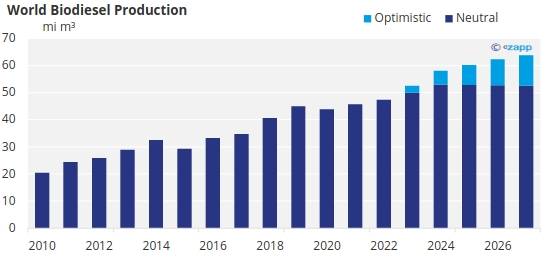
Source: IEA
What are the challenges of rapeseed tropicalization?
Rapeseed cultivars were developed in the past in countries with temperate and subtropical climates, where the soil is under snow for a few months. It is very different from the climatic conditions and soil of the Cerrado, rich in aluminum, harmful to agriculture, and poor in phosphorus. With the use of technology, we have corrected these issues and transformed the Cerrado over the last few decades, but challenges remain. About rapeseed, it is important that it is more tolerant to aluminum. There is also the issue of dry weather. In this sense, we are deepening the root system of the plant so that it becomes more resistant to drought. But there is also aluminum in the deeper layers of the soil.
And how can this problem be resolved?
We are doing several tests and observing the most productive plants. In many experiments, we took plants out of the ground to look at the root system. We want the most aluminum and drought resistant plants. It is also necessary to tropicalize the cultivation system, especially regarding soil corrections necessary to increase rapeseed productivity. We are looking at bio inputs, mainly those based on microorganisms. They improve the efficiency of nutrient application.
